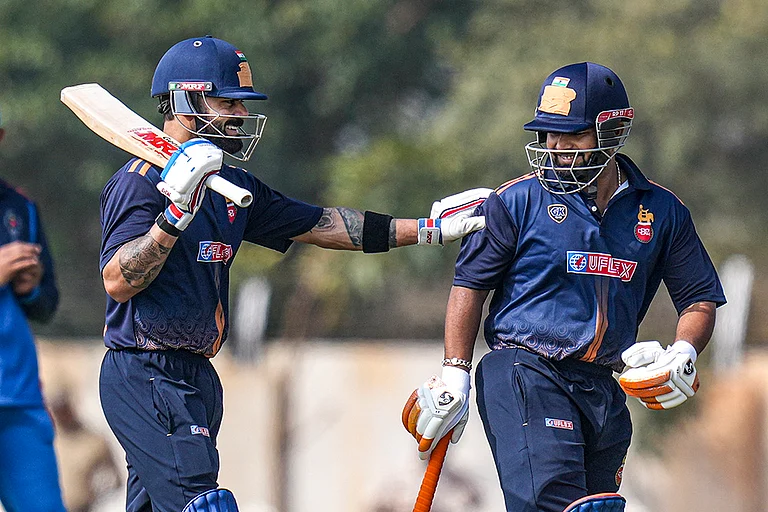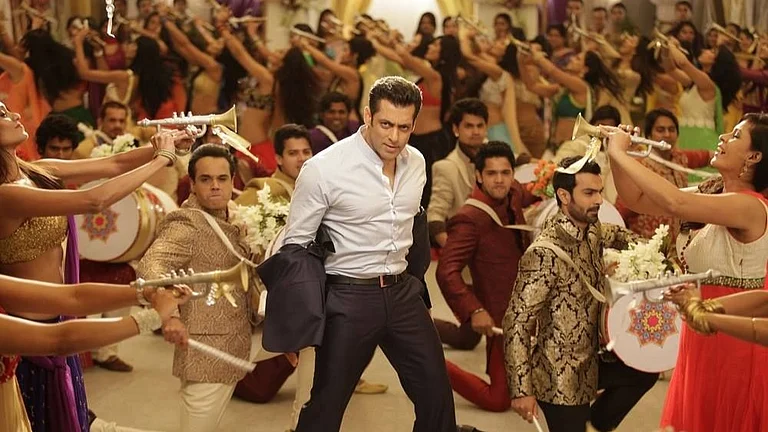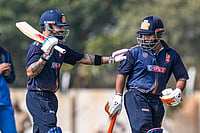On the eve of the Padma Award ceremony, when I sat down for an interview with Harsha Bhat, who is now the co-author of my book, it was this one line I told her that provoked her to ask me if we could work on a biography. I had summed up my conversation by saying, “It is my art and not any activism that has taken me from the footpath to Rashtrapati Bhavan” and that, she said, made my journey different. That’s what made the book happen. The fact that here was a transgender person from a remote village in Karnataka who had been given the country’s fourth highest civilian award, the Padmashri, for pursuing a folk art form, taking it from the streets to the stage and popularising it.
My art has accomplished what no other means could. My activism has also been through my pursuit of art and I see it has already begun to bear fruits. People now share that they do not roll up the car windows when they spot transgenders at traffic signals, instead, they roll down the windows and offer them something. My own community says my journey of reaching people has changed their perception of us. It has also inspired many young transwomen to take to respectable means of earning and living. Though it began as a means of survival, I have seen that art is a powerful tool and can be a catalyst for change.
But the change has taken almost a lifetime for inclusiveness cannot be accomplished overnight nor by legislation or force. It takes love and acceptance that come from within people and society.
I completed my term as the President of the Karnataka Folklore Academy in November 2022. This was the first time a government academy had a transperson leading it. And during my term, when I would attend sessions to qualify rural artists and performers when they sought a government pension, it would often take me back in time to the days when I started out.

As I say in the book, there was a time when this art form was seen as nothing but a means for transgenders to earn a living in the rural hinterlands. It took a Kalavva to turn it into something that got her the Rajyotsava Award and me, the Padma Shri. My ankles tell the tale of having carried the burden of this art form for years as Kalavva sang and I danced for days on end, week after week, going from village to village. It has been over three years now since I removed the large brass anklets. But the mark they left on my ankles after wearing them for almost three decades are thick and dark, and the pain makes walking difficult. But yes, this lifetime of pursuit of art and inclusion has shown me that change is possible. For instance, back when we just started out as folk artists, every day would be a fight for a space for ourselves.
To quote from the book, accepting us as artists beyond our gender identity was not easy. I remember when in Gollarahalli I had once expressed the desire to perform in a play and people had agreed to the request. But a few days prior to the performance, the village elders came to me and said I could not be part of it because it was a bad omen for me to be acting. They said the neighbouring villagers were also asking if the village lacked men that they had to resort to getting ‘male transgenders’ to perform male parts.
This taunt had upset the boys who said they would not act with a transgender. It shattered me to hear those words in the village I had made my home. I didn’t step out of my house for two days and didn’t take part in any village function for the next two years for fear of being disqualified from attending for being a transgender.
Those were the days when we faced such dilemmas everywhere. If I wanted to answer nature’s call, the gents’ washroom was not to be used and the ladies’ was inaccessible. ‘‘Hey, Manju, you shouldn’t use this one anymore, go to the ladies,’’ the boys would say. If I headed to the women’s toilet, the women would prohibit my entry. Ping-ponged this way, I’d stand weeping between two washrooms lamenting over my fate. I had nowhere to go, even to pee.
Even after we found acceptance as folk artists and would be invited to government- sponsored folk festivals and the like, we were not ‘accommodated’ by our own fellow folk artists. I remember once we were in a large room also occupied by some female Veeragase—a traditional folk dance form from Karnataka—artists. They wanted to change their clothes but were uncomfortable because of our presence. We were getting our make-up done. The organisers had put us together, grouping us all as women. But those girls were visibly uneasy. They finally requested us to step out so that they could change.
‘‘Why can you not change when we are around?’’ asked Yelavva Jogati from our troupe who had been in Mumbai earlier. ‘‘No, we won’t because you are men,’’ said the girl. ‘‘Who said we are men? We are also like you,’’ said Yelavva as she stood there and lifted up her sari. The girl broke down and just sat there. She didn’t change although the other girls apologised to us as we finished our make-up and left the room.
We faced such problems everywhere. I have tried addressing many issues after I became President of the Academy. Simple things like arranging lunch for the artists who come to qualify for the monthly pension provided by the government can make a lot of difference to their lives. Most folk artists are from really poor backgrounds and often travel to Bengaluru from far-flung villages. I know what it is to wait for a whole day on an empty stomach while invigilators treat themselves to tea and snacks. Now, every artist is provided lunch unless they leave before lunch time. It doesn’t just save them a few rupees; it is an acknowledgement of their presence.
Little changes in the way we accept and accommodate fellow humans can go a long way in making our society more positive and reduce friction. When Chornuru Kotrappa was assistant director of the Kannada and Culture Department, he ensured for the first time that our art got recognition and gave me an opportunity to teach it to students under the guru-shishya tradition. A stipend of Rs 500 was provided to the ten students who trained under me, and I got an honorarium of Rs 2,000, most of which was spent on the students themselves. He was also responsible for us getting a chance to perform in various districts in the state. Until then, we were not considered artists by the department. I used to tell students how we would give our lives to our gurus to learn, for years together, and we always gave them guru dakshina, the guru’s fees. Now, the government was giving ‘shishya vetana’ (student salary). I told them they should make the best of this opportunity.
There have been various organisations and forums in recent years that have treated us on par with others, recognised us as folk artists and taken care of our needs. Such equal treatment facilitates dialogue and mutual respect.
I have also tried to initiate changes in the lives of Jogatis who have come to me in recent years by ensuring they obtain at least a basic education. Most of us lost out on a lot of opportunities owing to lack of literacy and education. Even as I push for the government to create more employment opportunities, I also encourage our folk to qualify for the same. For art can accomplish with greater ease what any other means may take ages.
Equally important is the recognition of these arts and their pursuit. The Padma Award has initiated a world of change; it brought a community of transgenders, the art form called Jogati Nritya and its contribution to our folk culture ; and the lives we live, which has not been a part of mainstream discussion ever—into the limelight. It also gave my trans community and folk artists a ray of hope—that some day they too can find recognition and respect.
I reiterate that when it comes to art, the greatest joy or blessing is that the art and artists often merge and they can do for each other what no one else can for either. When I picked it up first from Mattikallu Basappa it was purely for survival’s sake; but it gave me a path for both life as well as for living.
On the one hand, I pursued it guided by my Guru and took it from fairs and the streets (where it hardly exists now with changing times) to stages and platforms across the country, and in return, it took me from being homeless, abandoned and orphaned to being an ‘Amma’ to countless people.
(As told to Harsha Bhat, co-author of From Manjunath to Manjamma: The Inspiring Life of a Transgender Folk Artist, HarperCollins India)
(This appeared in the print as 'Brave New Rhythm')





















